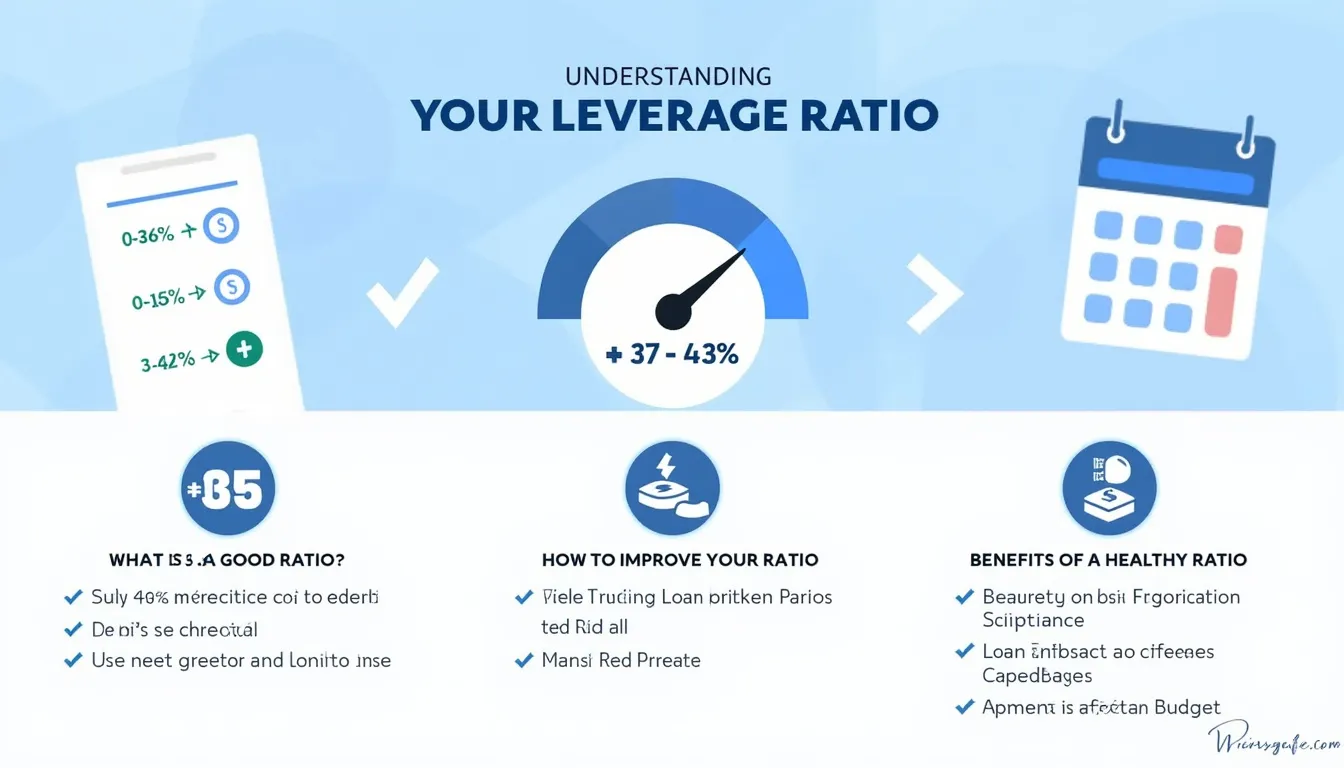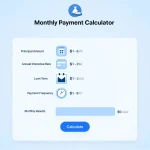Leverage Ratio Calculator
Is this tool helpful?
How to use the tool
- Enter total monthly debt payments. Example A: $650 in credit-card and auto-loan payments. Example B: $1,450 covering mortgage and student loans.
- Enter total monthly income. Example A: $4,100 from wages and freelance work. Example B: $6,200 combining salary and rental income.
- Select “Calculate.” The script computes your leverage ratio instantly.
- Read the result. Use it to adjust budgets or plan loan applications.
Formula
The tool applies:
$$ \text{Leverage Ratio} = \frac{\text{Total Monthly Debt Payments}}{\text{Total Monthly Income}} $$Example calculations
- Example A: $$ \frac{650}{4100}=0.1585 $$ → 15.85 %.
- Example B: $$ \frac{1450}{6200}=0.2339 $$ → 23.39 %.
Quick-Facts
- Most lenders prefer leverage ratios under 36 % (CFPB, 2023).
- Conventional mortgages cap at 45 % DTI for strong credit files (Fannie Mae Guide, 2022).
- Average U.S. household DTI was 31 % in 2022 (Federal Reserve Report, 2023).
- Lowering payments by 10 % can cut DTI by roughly 3-4 points (Investopedia, URL).
FAQ
What is a leverage ratio?
The leverage ratio shows what share of your income services debt, signalling repayment capacity (Investopedia, URL).
Why does 36 % matter?
The CFPB flags 36 % as the upper comfort zone where borrowers tend to stay current on loans (CFPB, 2023).
How often should I recalculate?
Update the ratio after any job change or new credit line—at minimum every six months (FICO Blog, 2022).
Which debts count?
Include mortgage, auto, student, personal and minimum card payments; exclude utilities and groceries (Fannie Mae Guide, 2022).
How can I improve my ratio quickly?
Pay down high-interest revolving balances first or boost income with side work to lower the numerator or raise the denominator (NerdWallet, 2023).
Does the ratio affect credit scores?
DTI itself is not in FICO models, but the debts creating it drive 30 % of your score through utilization (FICO, 2022).
Can a very low ratio hurt me?
“Prudent leverage can build assets; zero debt may limit credit history length,” notes the FDIC Consumer News (FDIC, 2021).
Is the calculator suitable for business loans?
Yes—substitute monthly business debt and revenue to get the same risk indicator used in SBA underwriting (SBA Lender Guide, 2022).
Important Disclaimer
The calculations, results, and content provided by our tools are not guaranteed to be accurate, complete, or reliable. Users are responsible for verifying and interpreting the results. Our content and tools may contain errors, biases, or inconsistencies. Do not enter personal data, sensitive information, or personally identifiable information in our web forms or tools. Such data entry violates our terms of service and may result in unauthorized disclosure to third parties. We reserve the right to save inputs and outputs from our tools for the purposes of error debugging, bias identification, and performance improvement. External companies providing AI models used in our tools may also save and process data in accordance with their own policies. By using our tools, you consent to this data collection and processing. We reserve the right to limit the usage of our tools based on current usability factors.







